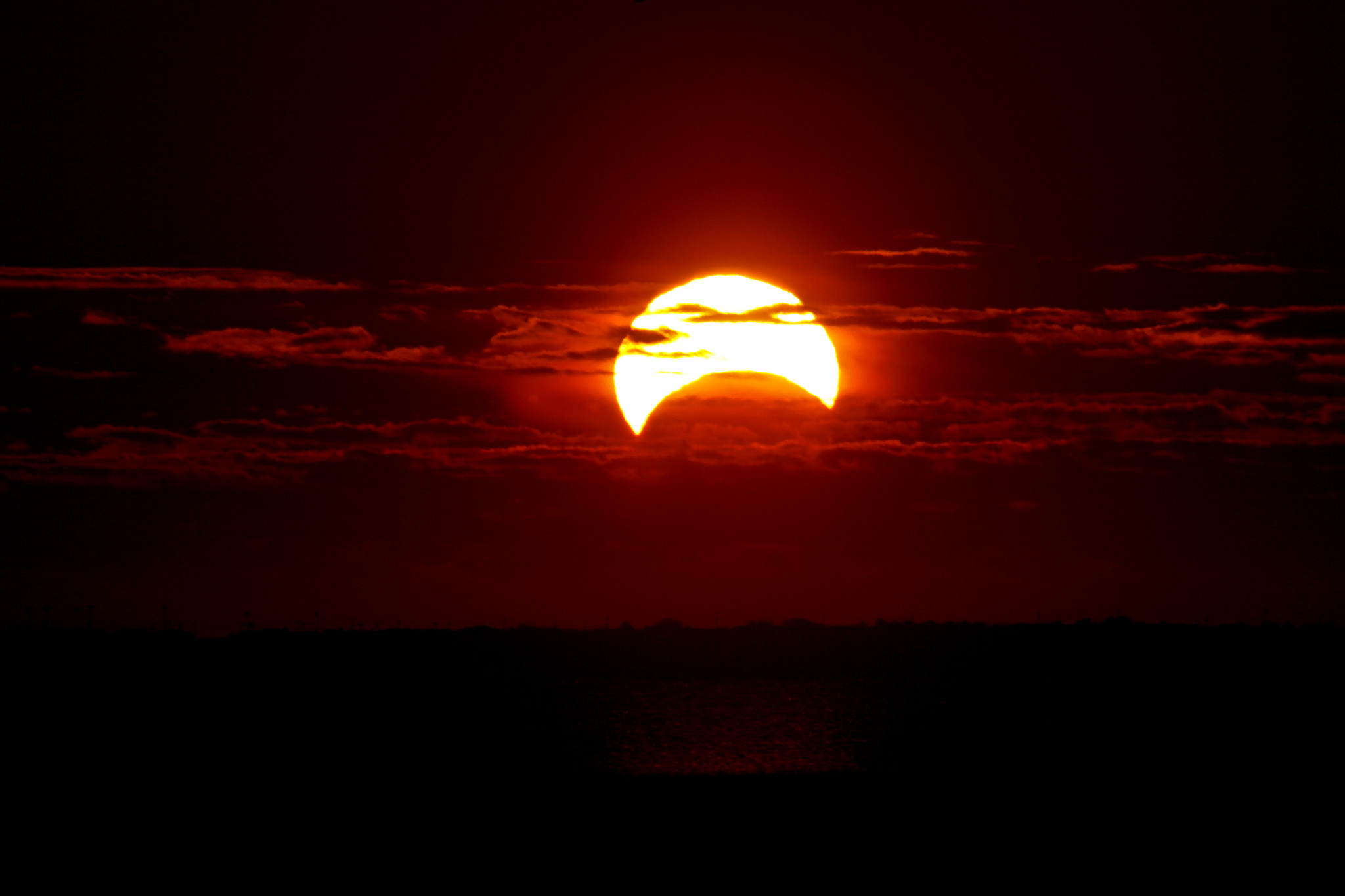This will be my first total solar eclipse. What I am planning on doing is not necessarily what I would recommend everyone to do. Nevertheless, perhaps these plans can inspire some ideas and spark conversation.
I’ll be in the path of totality somewhere near the Oregon-Idaho border.
The first thing to do at C2 (the second point of contact), which marks the beginning of totality, is remove your eclipse glasses. It’s safe. I will probably spend most of my time just staring at the eclipsed Sun in awe. Sticking out from behind the Moon will be the Sun’s corona and chromosphere. I’ve never seen these before.
Totality is supposed to be as dark as twilight. Some stars and planets will be visible. I will definitely take a few seconds to locate Mercury for the first time (see part 2 for where to look). I’ll have my small pair of binoculars strapped around my neck in part just to make sure I don’t miss this chance to see that elusive innermost planet. Another extra measure I’m taking is wearing an eye patch from twenty minutes before C2 until C2 in order to adapt one eye to the dark. That way, one eye will be more sensitive to dimmer stars and planets, as well as the corona. Ahoy!
At some point during totality, I’ll look around at the horizon, which is supposed to resemble a 360-degree sunset. If there are any animals in my surroundings, this would also be the time I’d take a look at them and examine their reactions to the sudden darkness.
Before you know it, it will be time to count down to C3 (the third point of contact), which marks the end of totality. I’ll want to get a nice last glimpse of the eclipsed Sun before it’s over. Be sure to put your eclipse glasses back on before the blinding brightness of the Sun re-emerges from behind the Moon.
What I won’t be doing during totality
I won’t be looking at my watch or my phone. I downloaded the Solar Eclipse Timer app ($2) that will count down aloud and tell me what to look for during the crucial moments of totality. By listening instead of looking, my eyes will be free to enjoy the event.
I won’t be taking pictures. Actually, I’m setting up my tripod with a super lens attached to a DSLR camera (see picture above) in order to take a 7-minute video. I’ll start recording a couple of minutes before totality, with the Sun in the lower left corner of the field of view (because it’s before local noon for me; otherwise, I’d want the Sun to start in the upper left corner). I’ve tested the magnification; it’s zoomed out enough that even with the Sun’s motion during those seven minutes, it will still be in view until a few minutes after totality. That way, I don’t have to touch the camera or tripod during totality. Since the camera is not a human eye, I can even remove the solar filter a little before totality begins and put it back a little after it ends.
I may sneak a peek at my air thermometer, but I don’t plan on reporting an official datum for the citizen science experiment (see part 5) during totality, just during the partial phases of the eclipse.
I hope the best for everyone attempting to view the eclipse! Clear skies!


